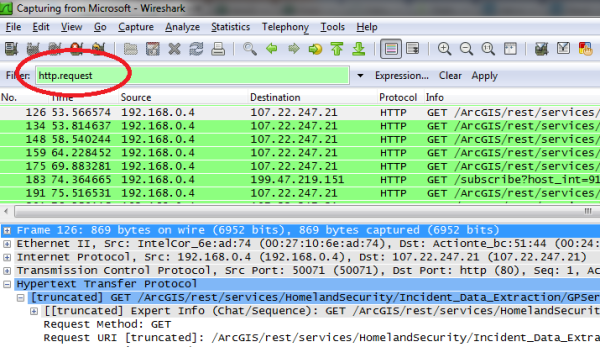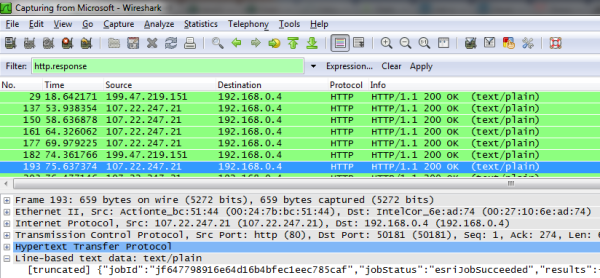If your native android app uses HTTP requests, then there is currently nothing built into Logcat that let’s you see HTTP connections. Just to clarify, you can see HTTP requests in Logcat when they come from the Android browser, but not when they come from a native app.
Like many of my blog posts, I’ve done a fair amount of searching before I try to re-invent the wheel. And, on this topic, I scoured the Logcat documentation, and I looked around for several days and found nada. Zip. Zero. The bottom line is I need a full-proof, gimmick free way to test HTTP connections that will work all the time.
Here’s the Solution. Load wireshark protocol analyzer on your machine, turn it on, and then run your app in the Android emulator. There are other protocol analyzers you can use, such as Charles, but I prefer wireshark. If you aren’t a developer and you don’t have access to the source code, then you are probably out of luck.
Why does this work? This works every time and all the time because the emulator runs on your machine, and the protocol analyzer picks up any HTTP request coming from the emulator (or anywhere else on your machine for that matter). Period.
Tip #1. If you haven’t used wireshark before then when you turn it on, in the filter field apply either http.request or http.response to cut down on the noise you’ll pick up.
Tip #2. Yep, you can also use this methodology to debug apps running in the Android browser of the Emulator. Also, as a bonus, if you are using this methodology to debug browser apps, you can set the proxy settings on your phone (or browser) and point them to the IP address of the machine running Charles or Fiddler, for example. Note, this only works if your phone and proxy are on the same network, and if your wireless router also acts as a LAN router to allow HTTP connections between machines. If you don’t know how to set proxy settings for your browser just do a search on “proxy android.”
Here’s an example with http.request. The services shown in the image are publicly available:
Here’s an example with http.response:

